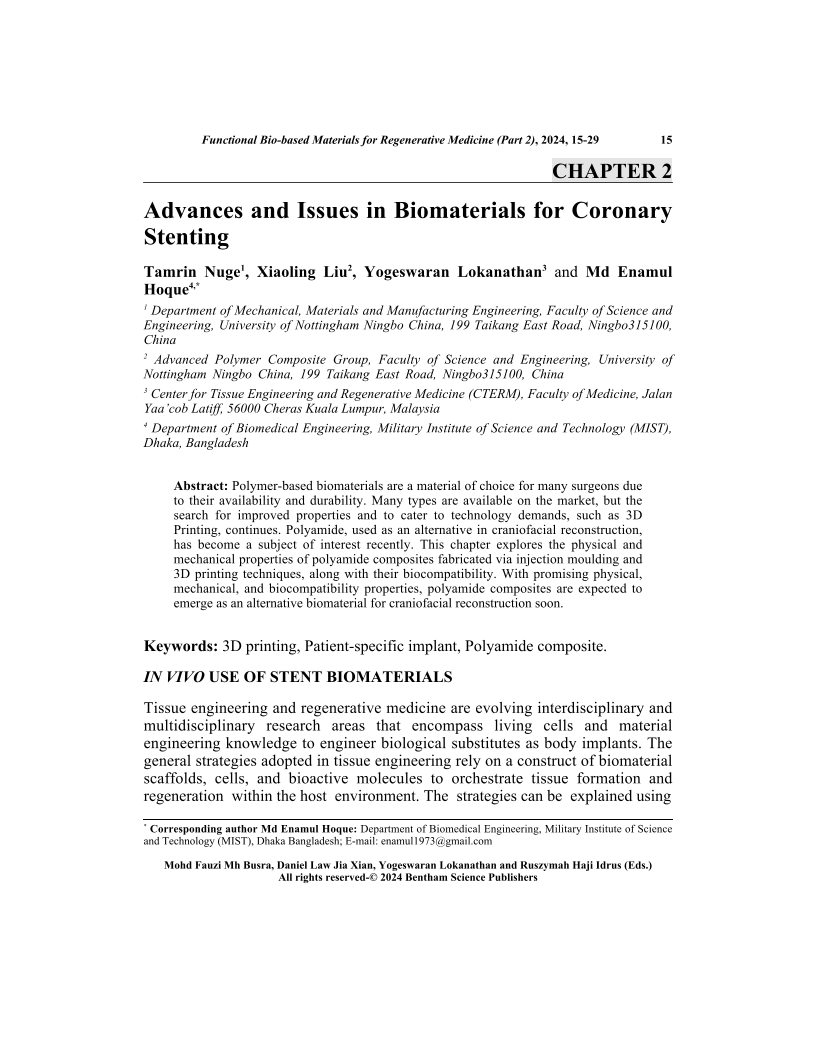Advances and Issues in Biomaterials for Coronary Stenting

- Authors: Tamrin Nuge1, Xiaoling Liu2, Yogeswaran Lokanathan3, Md Enamul Hoque4
-
View Affiliations Hide Affiliations1 Department of Mechanical, Materials and Manufacturing Engineering, Faculty of Science and Engineering, University of Nottingham Ningbo China, 199 Taikang East Road, Ningbo315100, China 2 Advanced Polymer Composite Group, Faculty of Science and Engineering, University of Nottingham Ningbo China, 199 Taikang East Road, Ningbo315100, China 3 Center for Tissue Engineering and Regenerative Medicine (CTERM), Faculty of Medicine, Jalan Yaa'cob Latiff, 56000 Cheras Kuala Lumpur, Malaysia 4 Department of Biomedical Engineering, Military Institute of Science and Technology (MIST), Dhaka, Bangladesh
- Source: Functional Bio-based Materials for Regenerative Medicine: From Bench to Bedside (Part 2) , pp 15-29
- Publication Date: February 2024
- Language: English
Advances and Issues in Biomaterials for Coronary Stenting, Page 1 of 1
< Previous page | Next page > /docserver/preview/fulltext/9789815179330/chapter-2-1.gif
Polymer-based biomaterials are a material of choice for many surgeons due to their availability and durability. Many types are available on the market, but the search for improved properties and to cater to technology demands, such as 3D Printing, continues. Polyamide, used as an alternative in craniofacial reconstruction, has become a subject of interest recently. This chapter explores the physical and mechanical properties of polyamide composites fabricated via injection moulding and 3D printing techniques, along with their biocompatibility. With promising physical, mechanical, and biocompatibility properties, polyamide composites are expected to emerge as an alternative biomaterial for craniofacial reconstruction soon.
-
From This Site
/content/books/9789815179330.chapter-2dcterms_subject,pub_keyword-contentType:Journal -contentType:Figure -contentType:Table -contentType:SupplementaryData105

